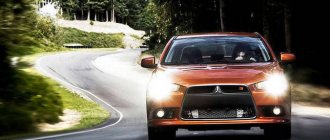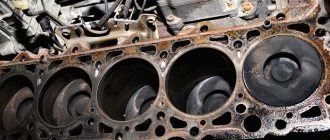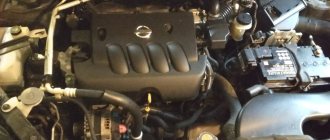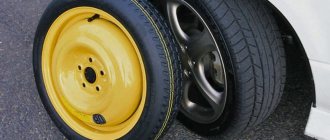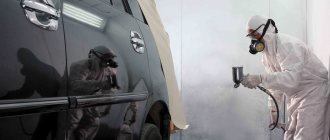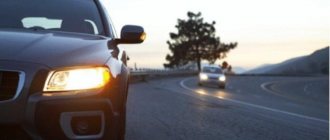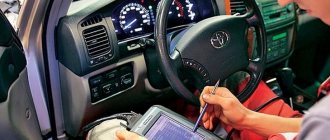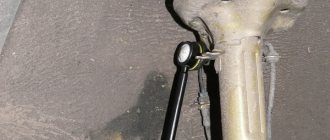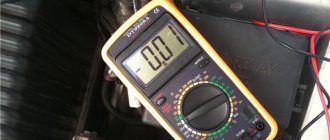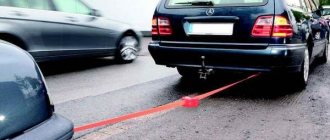The drying time for a car body after painting varies greatly. It all depends on many factors.
- What kind of paint was used: alkyd, melamine alkyd or acrylic.
- What and where they painted: in the garage on their own using a spray gun, with an aerosol from a spray can, with a pencil. Or in the cabin, in a special chamber with high temperature.
- How many layers of coating were applied: one, two or three, or one layer of paint plus a layer of varnish or polish on top.
- What is the drying temperature, +15-25 ℃ in garage and natural conditions in summer, or + 100 ℃ in a paint booth.
- Was the body primed before painting or not? If so, to what extent has the primer dried? A primer that has not dried (has not completed polymerization) will delay the drying of the paint.
In addition, the degree of drying also differs.
- The first drying for alkyd enamels is primary, when the solvent evaporates and the paint acquires density. In common parlance, the initial drying is called “touch-free,” that is, when the paint stops being sticky. For most paints this is about 60-80 minutes.
- The second degree of drying, when the paint polymerizes and acquires basic strength - about 12 hours for alkyd paints.
- Third degree, complete hardening of the coating - about a day.
Acrylic enamels dry faster. After 10-15 minutes. The paint stops being sticky and dries completely after 2 hours. The time indicated is for a drying temperature of +20-25 ℃, that is, after painting in a garage in summer or in winter in a garage with heating and ventilation.
The thinnest layer of aerosol from the can dries almost instantly.
Drying features depending on equipment
ATTENTION! A completely simple way to reduce fuel consumption has been found! Don't believe me? An auto mechanic with 15 years of experience also didn’t believe it until he tried it. And now he saves 35,000 rubles a year on gasoline! Read more"
If the enamel is dried without additional drying devices, then the drying of the main top layer lasts approximately 5-6 hours . All layers harden completely after just 24 hours. You can find out about this data by reading the instructions that come with the paint. Drying also depends on the drying method. Most often this process is carried out using special devices called “paint booths”. These car dryers directly affect the quality and speed of drying of the enamel. Almost every salon has such spray booths for painting cars. There are the following devices that act as paint booths, on which the drying time depends:
- Convection chambers provide the fastest drying time. Work happens faster due to the large amount of heat that goes to the car through heated air. This process is comparable to using a conventional fireplace with a fan. The difference here is that the air masses are evenly distributed over the surface and do not pass further. Despite the fact that drying of the car body enamel after painting occurs as quickly as possible, the paint does not suffer from this and is securely fixed.
- Infrared drying of a car is, of course, good, but how does paint or enamel behave and how long does it take to dry in a mixed-type chamber? Due to the rapid exchange of energy, the enamel dries 2-3 times faster than if drying took place passively (the car was parked in a ventilated area). This is a simple and safe method, but there is one important feature: you are unlikely to be able to properly dry parts that are fenced off by another plane. That is, internal parts may not dry to the desired level, so when drying such elements, infrared drying is most suitable.
- Thermal drying chambers would also be an excellent solution. Here, infrared drying does all the work. The air is accordingly heated by infrared radiation. Infrared drying of enamel does not require an active medium, because it is carried out by a large number of panels heated by gas, incandescent lamps and various other reflectors, which contain an infrared base. The infrared wave and its length directly depend on the temperature of the source. Probably the most effective device for this action will be a flameless gas burner equipped with ceramic nozzles. The gas-air mixture creates a reaction similar to a small explosion. In this case, the nozzle heats up to 900 degrees, and then an infrared wave with a length of 2 microns comes from it. When an infrared wave hits the enamel of a car, it causes the molecules to vibrate. In general, the metal of the body gets very hot.
How long does it take for a car to dry after painting?
During the drying of the newly applied paintwork, the process of polymerization of the paint components, or their crystallization, occurs. The crystallization period may vary and completely depends on the type of paint, application conditions and operation of the machine. Typically, acrylic enamels dry faster than others (2-3 days).
There are paints and varnishes whose crystallization time is significant - up to 14-28 days, and only during this period do they gain full strength. You also need to take into account the drying time of the varnish, which can also be quite long. In any case, you need to find out about the exact drying time from a car painter or, if you did the painting yourself, read the instructions on the paint packaging.
How long after painting can you drive?
Premature use of the car can cause clouding of the fresh coat of paint and varnish, the appearance of stains and small scratches. This will ultimately reduce the service life of the machine, because rust can “settle” in defective areas. The appearance of the coating will also suffer, and the aesthetic qualities will be seriously reduced.
The ideal option is to wait 14-20 days after painting the car, and only then start driving it. In practice, this is most often impossible, so it is recommended not to operate the car for at least 3-7 days from the moment of painting, and then drive it as carefully as possible, following the recommendations of professionals and protecting it from any unfavorable factors.
How long before you can wash your car?
Washing a freshly painted car is strictly prohibited! However, when the car body becomes dirty, particles of dirt, dust, oils, and chemicals react with the paint, which has not yet gone through the stage of complete polymerization. Dirt seems to eat into the coating, scratch and spoil it, so a dirty car still needs washing.
Experts advise not to wash your car for a month after painting, if possible. Do not use high-pressure washing during this period, otherwise the coating may be damaged.
The minimum period of time during which washing is prohibited is 15 days, and even after this period, you should contact specialists for a delicate wash and do not scrub the body yourself.
If the painting was done in winter, which does not happen often, you should not wash the body for as long as possible. It is better to find out about the exact period after which you can start washing from a car painter or read in the instructions for the paint.
Prohibitions when washing a car after painting
In order for the operation of a new car paintwork to be long and problem-free, after painting you need to eliminate some actions and follow the advice of car experts:
- do not wash the car immediately after driving on a hot, sunny day, but first wait until the coating has cooled naturally;
- do not wash directly in the sun, work only in the shade;
- do not wash the car in the wind, do not allow debris or dust to get on the fresh paintwork, so as not to scratch it;
- do not place the car on gravel or sand surfaces, or place it on the grass while washing;
- do not use brushes, old sponges, other rough devices, as well as silicone or other scrapers to wash the body;
- do not use household detergents, especially powder ones;
- do not use cheap car shampoos of unknown brands, which can cause clouding of the paintwork;
- Do not use hard water for washing, which leaves white spots and stains - they will have to be scrubbed off, and this is harmful to the paint.
Gentle washing of the car should be carried out at least 3 times after painting. Only in subsequent washes can you follow the general recommendations for washing the body.
Rules for washing a car after painting
The ideal weather for the procedure is cool, cloudy, but without strong wind. If it is summer outside, then the washing is carried out indoors or in a shaded place.
Using detergents
During the first wash, it is better not to use detergents at all, so that the procedure is as gentle as possible on the fresh paintwork. Only when the body is heavily soiled do they use special car shampoos, excluding the application of ordinary soap solution, any cleaning agents, liquids and sprays. They often cause paint to fade and stain.
If you wash your car in the cold season, it is advisable to use silicone-based products. They form a thin protective film on the body, which will further protect the paint from the negative effects of environmental factors.
Also, car dealerships sell polishing shampoos with wax, which give the paintwork an additional shine and also provide some protection from damage.
Another type of high-quality detergents is anti-corrosion shampoos, which prevent the development of rust. They can also be used for bodywork. It is recommended to wash glass, plastic elements, and mirror parts of the car with special products designed specifically for such materials.
Infrared method
Most often, a compact infrared dryer is used to dry a car body or some plastic elements - it covers a distance of 20-40 cm. This device is powered from the mains, but there are also models with a battery. The optimal distance between the painted part of the car and the lamp should not exceed 50 cm. The module of these dryers is equipped with a positioning cassette, which can be used to change the position and height of the unit. For those who have a very small workshop, we recommend taking a module for a smaller car. But do not forget that the painted surface area will also be smaller. Usually the infrared lamp is equipped with a timer, with which you can find out how long the enamel and surface dry after painting.
A popular question is how long does it take for varnish to dry after being applied to a car body. After 5-6 hours the car can be used, but the car should be washed no earlier than a week after painting and varnishing.
The convective method is traditional for small workshops, and not only commercial ones. After all, such a lamp is also suitable for a simple driver who wants to keep his car in excellent condition. The main disadvantage of this method is that it heats up too quickly, due to which the outer layers dry faster than the inner ones, so if you overdo it with temperature, the paintwork can bubble.
To avoid this, make sure that the heating is as slow as possible. In this regard, an infrared lamp is better, because the rays pass through all layers. If you do not want to take risks or you have little experience in handling such units, it is better to calmly wait a day until the car is completely dry. You can start operating (but carefully) the machine after drying for 5-6 hours has been completed.
Washing and detergents after painting a car
After painting a car, the varnish hardens very quickly - about 2 days, but this does not mean that your car is dry. The inner layers set within 3-5 weeks. The drying process depends on the thickness of the paint layer, the materials used and the drying method. But, be that as it may, two weeks after painting, a dried layer is formed, sufficient for washing the car.
The first time after painting, you need to handle the car very carefully: – it is advisable not to operate the car after painting for a week (if you still cannot avoid trips, then at least do not travel outside the city so that dust settles on the surface of the car as little as possible); – a freshly painted car should not be exposed to the sun or rain; – you should not wipe dust from the surface of the car at this time, much less scrape off any remaining dirt after a trip in wet weather.
How to use catalysts
You can also dry the car body using special rejection catalysts. You can find a huge number of species in stores selling paints and varnishes. You need to choose the catalyst that matches your paint - this is usually indicated on the label. If there are no instructions, you can always ask the seller or find information on the Internet.
The solution helps reduce the temperature to 75 degrees. The catalyst for cars is prepared in glass containers and must be used immediately. Almost every manufacturer sets an expiration date for this solution of one month, but check how long your product dries on the packaging. Anhydride must be applied before painting. After applying the layers, the anhydride quickly hardens, forming a reliable fastener for the first layer. Also, using such a solution will help make the appearance of the car more shiny, even a little glossy.
Forget about fines from cameras! An absolutely legal new product - Traffic Police Camera Jammer, hides your license plates from the cameras that are installed in all cities. More details at the link.
The crisis is forcing many car enthusiasts to do painting work themselves. An important question arises: “How long should a car dry after painting?”
Washing equipment
When you are planning to wash your car after painting, immediately put all brushes aside! Even brushes with soft bristles do not guarantee that they will not damage the paint layer. You should not use aggressive detergents, especially if their composition does not provide for the care of the painted surface - washing powders, soap solutions, vinegar or other household chemicals.
– will protect the coating from ultraviolet radiation; – will prevent the accumulation of dust and dirt; – will delay the need to wash the car for a longer period. If you painted your car in the autumn-winter period, you can use a cleaning product that contains silicone. In this case, an invisible film is formed that protects the surface of the painted body from various damages.
Fast hardening
To speed up the process, paint booths were invented. Many service stations are equipped with them. Drying in the chamber occurs due to a large volume of heat, which is evenly distributed to the surface and does not go further. Infrared drying provides high speed, but does not guarantee uniform drying. In a simple garage, you can use an infrared emitter, moving it from place to place. You can take a chance and use a catalyst, which speeds up drying and makes the paint surface harder. But the process itself requires careful study.
How long does it take for a car to dry after painting in a chamber?
Painting in a special chamber is a relatively high-tech process. For this purpose, special paints, hardeners and varnishes, and professional spray guns are used. A high temperature is created in the chamber, about 100-130 ℃. The drying time is clearly defined for each type of paint and written in the instructions.
Washing
Many car owners have a question: “Is it possible to wash the car after painting?” If yes, then after what period of time can I wash my car? A physical understanding of the paint drying process will help you answer. Varnish applied over paint hardens quickly. But the deeper layer is subject to a long process of crystallization. It can take up to 5 weeks. And all this time, this layer lends itself well to various influences. Much depends on the paint itself, the technology of its application, the time of year and environmental conditions.
How long should you wait to wash your car? The average time is 15 days. During this time, the top layers will harden well. For the first two weeks it is better not to ride at all. Even dust can damage the coating. It is not even recommended to brush it off with special devices. It is advisable to protect your car from the sun and precipitation during this time. Even if the car is dirty, it is better not to wash it, wait for the paint to completely harden.
Drying after dyeing in a small room
How to properly dry after painting? The process can be carried out right in the garage. Moreover, it can be done in parts: with the help of reflectors and similar equipment, you can easily dry the paint first on one area of the car, then on the next, etc. Of course, the distance between the heat source and the surface of the part should be strictly controlled.
Sometimes there is no time to wait for drying to be completed naturally. In this case, it is quite justified to use infrared lamps. This is a fairly compact equipment that can be used independently or as a drying chamber for a car. Compact manual drying allows you to dry paint on parts even in places that are inaccessible to drying chambers. These include interior panels or interior elements.
The car drying process can also be carried out right in your garage. To do this, you can use the necessary tools: when using reflectors, you can very easily dry the paint gradually on each part of the car. Of course, it is necessary to control the distance between the surface of the car and the heat source.
Sometimes it happens that there is no time to wait for drying to complete naturally. Then it is necessary to use special infrared lamps. It is quite possible to use such compact equipment independently. Compact and convenient manual drying makes it possible to dry paint on individual parts. These include interior elements and interior panels.
Adviсe
If you need to wash your car earlier, here are a few tips:
- Avoid using aggressive substances, even washing powder.
- Do not wash with a high pressure cleaner.
- No brushes, just a rag or a gentle sponge.
- You can use wax-based shampoos. This will create additional protection.
- The water temperature should be equal to the ambient temperature.
- Wash your car indoors or under a canopy.
- Avoid dust, wind, hard water.
- It is advisable to dry the surface.
The decision to paint a car is not spontaneous. Usually, this matter is planned in advance. For reliability and efficiency, do not plan to travel, especially in bad weather. Take a break for at least a couple of weeks. To save this time, you can combine this work with other repairs.
If, when choosing paint, you discard personal preferences regarding color and cost, guided more by practical issues, we recommend paying attention to how long the paint takes to dry.
Specifics of coating and drying of various types of car varnish
The composition that was previously used to coat the car body was a cellulose-based mixture. It was no longer used due to lack of shine, flammability and loss of color transfer ability.
Another option was glypthal coating. It is applied without a special chamber in a well-ventilated workshop where there is no dust. This composition takes a long time to dry. Drying of the varnish is accelerated by an activator, which improves the resistance of the coating to various damages. In addition, a light thinner is added to the coloring composition.
Painting using the hot method allows you to reduce the time for complete drying . To do this, the varnish is heated to +70°C and applied to an already heated surface. In this case, no thinner is added.
The third type of varnish is polyurethane.
It is used with a special hardener, which accelerates the setting of the coating. The substance must be dissolved in the varnish 10-12 minutes before painting.
The composition is sprayed in 3 layers:
- contact;
- basic;
- finishing.
Before applying the second and third coats of paint, you must wait 15 minutes for the car to dry. The third one will take about an hour to dry.
A common type of paint and varnish coating (LPC) is acrylic, which can be:
- thermo-hardening (the composition is used in factories, because it dries at high temperatures);
- thermoplastic (the substance dries when the solvents have completely evaporated).
Please note: Thickness gauge: description of the device, rules and procedure for use
LCP does not lose its properties when properly stored. The conditions under which the product must be kept and the expiration date are indicated on the packaging. Due to severe frost or heat, the liquid may become cloudy, separate, and will flake off after painting. Opened autovarnish is stored for 3-6 hours at +20°C.
Are there “universal” paints with the same surface drying time?
The answer is clear - no. Universality is just a myth used by unscrupulous manufacturers solely for advertising purposes. At best, you buy paint with a one-time or very short-term effect. Therefore, you should not believe the manufacturer’s promises that the paint is equally ideal for repairing the paint surface of a car, for heating radiators, and for decorating a kitchen or bedroom. An excellent result will only be achieved if the paint is used for a specific purpose. In other cases, you will get a mediocre result and simply throw money away.
General factors that have the same effect on the drying of any paint
Of course, the paint base has a direct impact on drying speed. But, in addition to this, you should also take into account external factors, the influence of which determines how quickly the mixture hardens:
- Surface porosity. The larger the capillary structure of the material being painted and the amount of paint that gets inside, the longer the drying time. For example, the same paint dries faster on metal than on wood. To close the pores and create an evenly homogeneous surface, various primers are used.
- The ambient temperature also affects the rate of evaporation of the components included in the paint. However, excessively high temperatures may not cause acceleration of polymerization, but, on the contrary, make the composition more liquid and, accordingly, slow down the drying rate. Manufacturers usually indicate the temperature range acceptable for applying paint.
- Ambient air humidity. Some paints and varnishes do not release moisture well in humid air, which increases the drying rate.
- Availability of ventilation. All paints dry faster with more active air movement. However, drafts are contraindicated - a more competent solution is to use a forced supply and exhaust ventilation system, balanced in volume and speed.
- Another factor is the thickness of the paint layer applied to the surface. The thicker the coating, the longer the drying process.
What not to do while washing
In order not to spoil the fresh paint layer when washing a car, you should consider what you absolutely should not do: – Under no circumstances should you wash your car immediately after a trip on a hot sunny day! The car must first cool naturally, otherwise the painted layer may become cloudy. – Do not wash the car in the sun, but only in the shade, since drops of water drying in the sun will cause the paint to fade unevenly.
– You can’t wash your car in the wind. Specks of dust and debris brought by the wind and remaining on the surface of the body will become an abrasive, and this is a threat of scratches. In windy weather, a washed car will dry faster and white spots may appear on the surface from the shampoo used. They will have to be scrubbed thoroughly, and this does not help preserve the varnish layer.
– Don’t even think about using a high-pressure apparatus to wash your car! Everything is done entirely by hand. How to wash a car We have already figured out how many days after painting you can finally wash your car - after 14. Now you need to figure out how to carry out this procedure so as not to harm your four-wheeled friend.
At the same time, washing should be gentle not only the first time after painting, but also 2-3 subsequent times. The ideal weather for washing is cloudy and cool. For washing, use a soft sponge and a light stream of water. Wet dirt can be removed with a soft cloth. If the dirt has already dried, first soak it well with water and then remove it.
You should start washing your car from the roof. First, wet it with a gentle stream of water from a hose. If there is no running water, then use a garden watering can. After wetting the surface, dilute the shampoo in a partial bucket of water. Soak a sponge in this solution and wash (you can use a spray bottle if desired). Don't forget to wet the sponge in water as often as possible!
To avoid the solution of water and shampoo from drying out on the surface of the body and the appearance of white spots or streaks (they will have to be removed by rubbing these places with a damp cloth, which in our case is undesirable), you can not wet the entire car at once, but half at a time. After rinsing one part, apply shampoo to the second, and then rinse.
How long does oil paint take to dry?
Oil-based paints traditionally take the longest to dry. In recent years, manufacturers have abandoned the use of natural drying oil for such compositions. Now in the mass production of oil paints, alkyd or pentaphthalic bases are used. This reduced the drying time of oil paints to one day.
Complete hardening of one layer occurs only as a result of oxidation of the upper oil layer. Factors that matter here include:
- air temperature;
- humidity;
- presence of direct sunlight.
Oil paints with the addition of antiseptic compounds take longer to dry. The period of time sufficient for drying of such and similar paints is indicated to the manufacturers on the can. In any case, drying time is at least 12 hours.
Application of catalysts
Maleic anhydride
- Maleic anhydride. This solution can reduce the overall drying temperature even to 75 degrees. This catalyst can be prepared in any glass container; it must be used immediately. Its shelf life is one month, but its properties are gradually lost. You decide how much you need to apply, but you need to do this before painting. The catalyst will certainly allow for rapid curing of the surface no later than one hour. And the appearance of the car will become pleasant and smooth.
- Contact Petrov. Enamel for painting can be diluted with Petrov's contact. In this case, the amount of catalyst must be determined; it all depends on the conditions of the process itself. If the process is carried out at room temperature, you should take only 60 g of Petrov’s contact per kilogram of enamel. Immediately after staining you need to wait about a week. For a successful surface drying process, it is necessary to apply paint to a previously primed surface.
- Paratoluenesulfonic acid. The product is diluted in an amount of 50 g per kilogram of enamel. Before adding it, it is necessary to dilute the catalyst in an alcohol solution (25%). Surfaces painted using this method are much less resistant to water, gasoline and salt, and their gloss is significantly reduced. In this case, the surface dries within one week, after which the part is ready for use.
Maleic anhydride
A solution of this substance allows you to reduce the drying temperature to 75 degrees. You can prepare the catalyst in a glass container and use it immediately. It has a shelf life of a month, but its properties are lost over time. Maleic anhydride must be applied immediately before painting.
Contact Petrov
You can dilute the enamel for painting with Petrov's contact. The amount of catalyst must be certain, depending on the process conditions. If you want to carry out the process at room temperature, you need to take 60 g of Petrov’s contact per kilogram of enamel. After staining you will have to wait about a week.
In order for the drying process to be successful, you need to apply paint to the primed surface. Before use, it is important to test on a separate sheet of metal and wait until it dries. This will give you the opportunity to check if the color has changed. This catalyst is suitable for all shades of white enamel. The downside is that a year after such painting, a color change occurs: the painted surface acquires a yellow tint.
It is used at the rate of 50 g per kilogram of enamel. Before adding to the paint, the catalyst is diluted in a 25% alcohol solution. Surfaces painted in this way are less resistant to gasoline, salt and water, and the shine of the paint is reduced.
The surface dries within a week, after which the part is ready for use. If you use a hot type of paint drying, you can reduce the drying time to a day or less. In addition, this minimizes the possibility of various foreign substances getting onto the surface. Remember to follow safety precautions when painting your car.
Enamels and nitro paints
For most of these compositions, coating with a second layer is allowed within 20-30 minutes after applying the first layer. It takes about the same time for the second layer to dry. Manufacturers allow up to 12 hours for complete hardening so that painted products can be used.
Please note that nitro-based paints dry faster than enamels. This is also due to the primary areas of use of nitro paints and enamels. The former are mostly intended for painting metal and plastic surfaces (provided that the solvent in the paint base does not “eat” the plastic). Enamels can be used to cover any surface, including wood.
For PF 115 enamel, for example, the drying time is directly related to the thickness of the layer applied during painting and the color of the paint. For example, it will take 48 hours for cherry and red enamel to dry. For everyone else, 24 hours is enough.
Useful tips
Recommendations from experts that should be followed to quickly dry the tinting substance after application:
- It is necessary to add a drier to oil paint. It will speed up the drying process even when reapplying the composition.
- During renovations in a residential area, it is better to replace paint coatings with alkyd ones.
- Before painting, you need to warm up the room, since the tone applied in a cold room will quickly thicken in low temperatures, dry slowly and be difficult to distribute with a brush or roller.
- The thinner the paint layer, the sooner it will dry. If after this you can see translucent areas on the material, all painting procedures are repeated every other day.
- To avoid enamel oxidation, it is necessary to ensure constant air circulation in the room; it is better to artificially create a draft.
- The most favorable conditions are low humidity and high air temperature.
- Modern construction hair dryers have a separate function for drying paint. When using the device, it is important to avoid sudden temperature changes and bring it too close to the painted surface, since the applied layer may crack.
- Small parts coated with tone can be placed close to heating radiators or dried in the oven by selecting a special mode at a temperature of no more than 60 °C.
- An infrared heater will help dry a wall, ceiling or floor due to its ability to penetrate under the dye layer and heat it from the inside. The paint composition, spreading, is evenly distributed over the plane, so it dries in a matter of hours.
